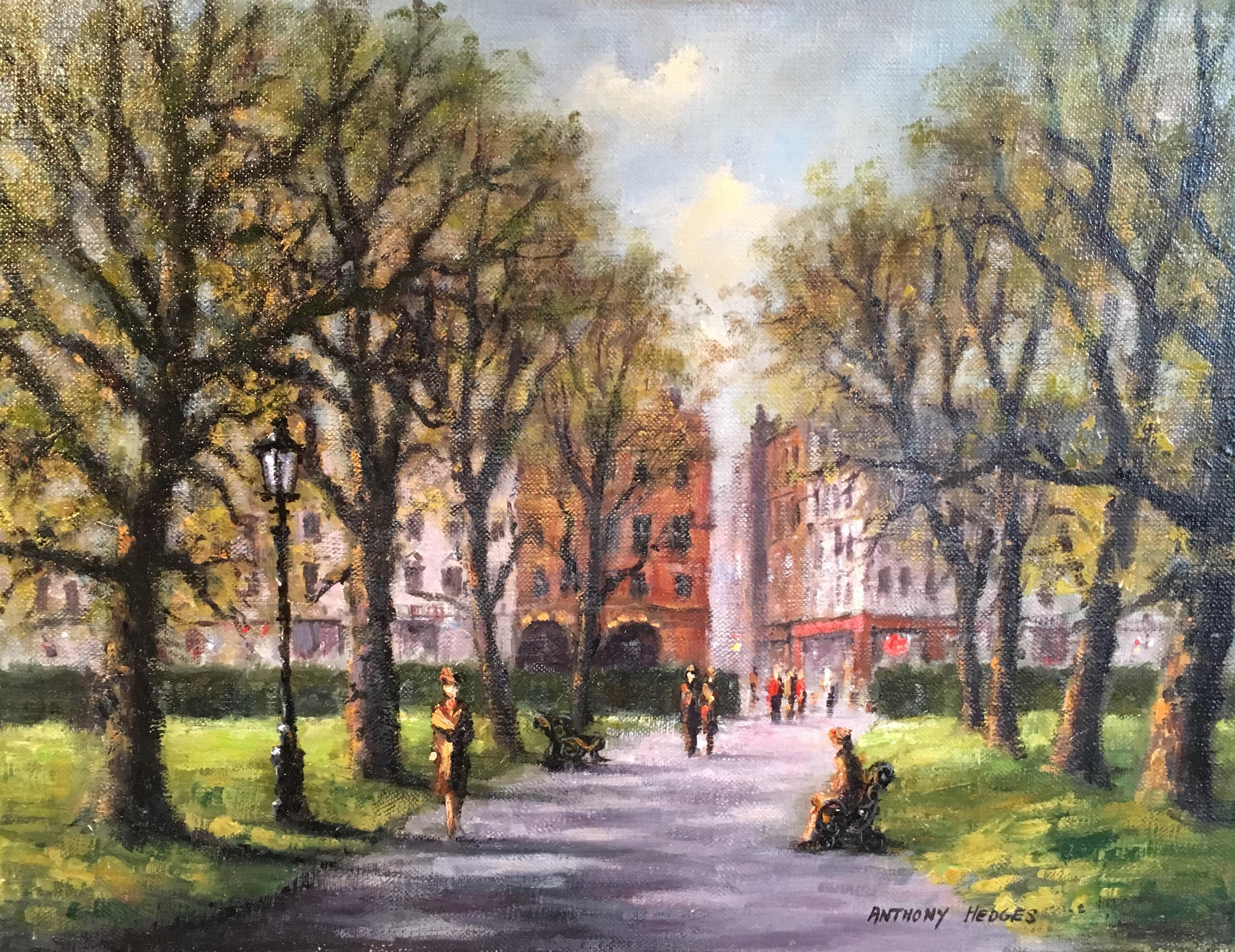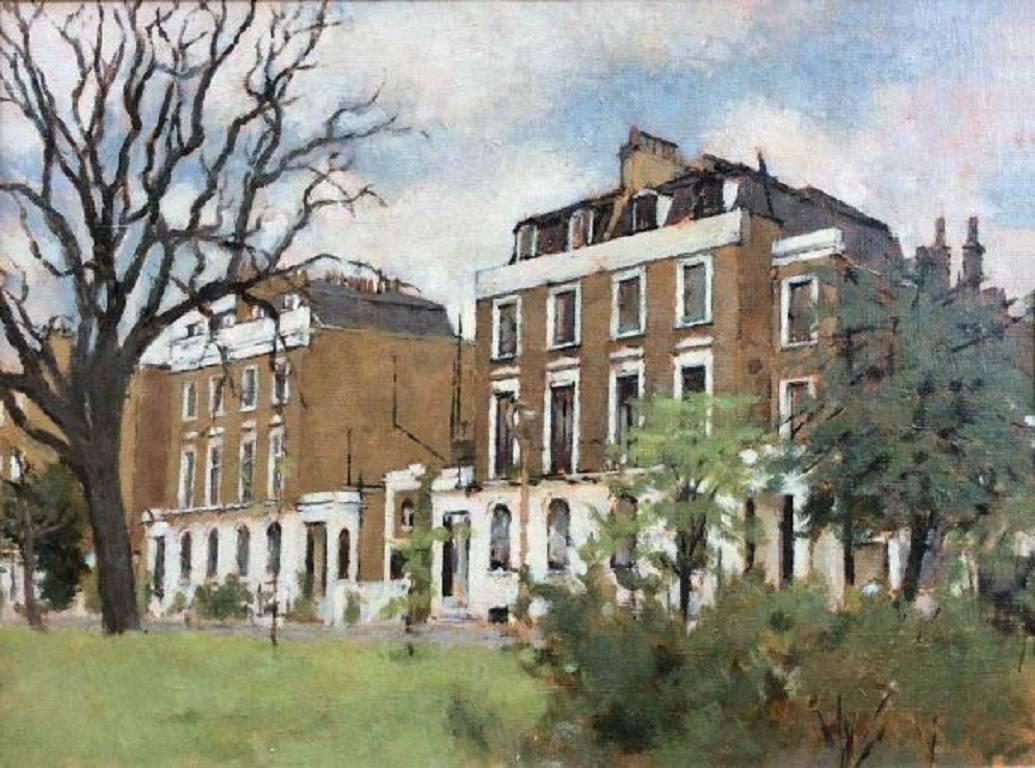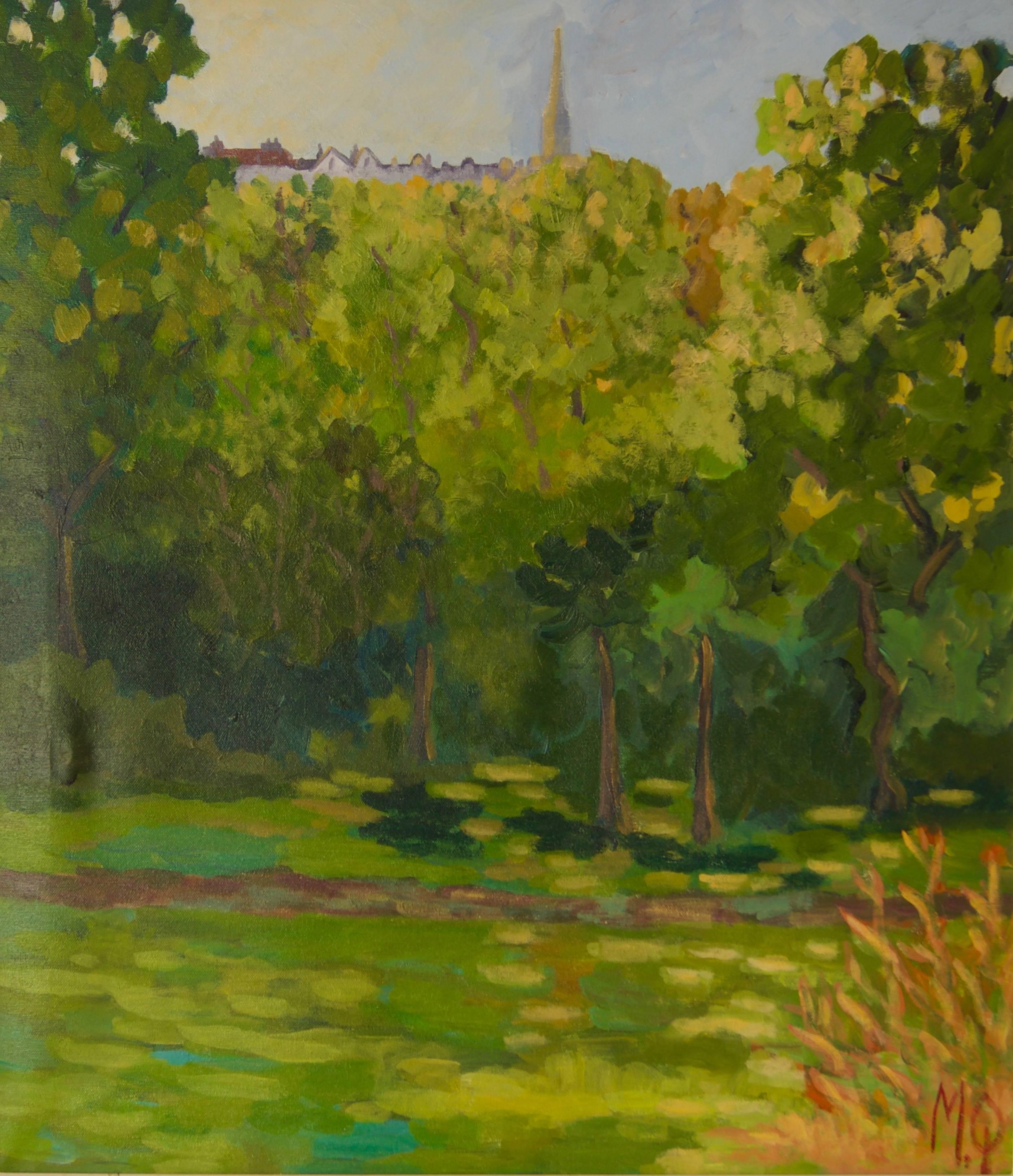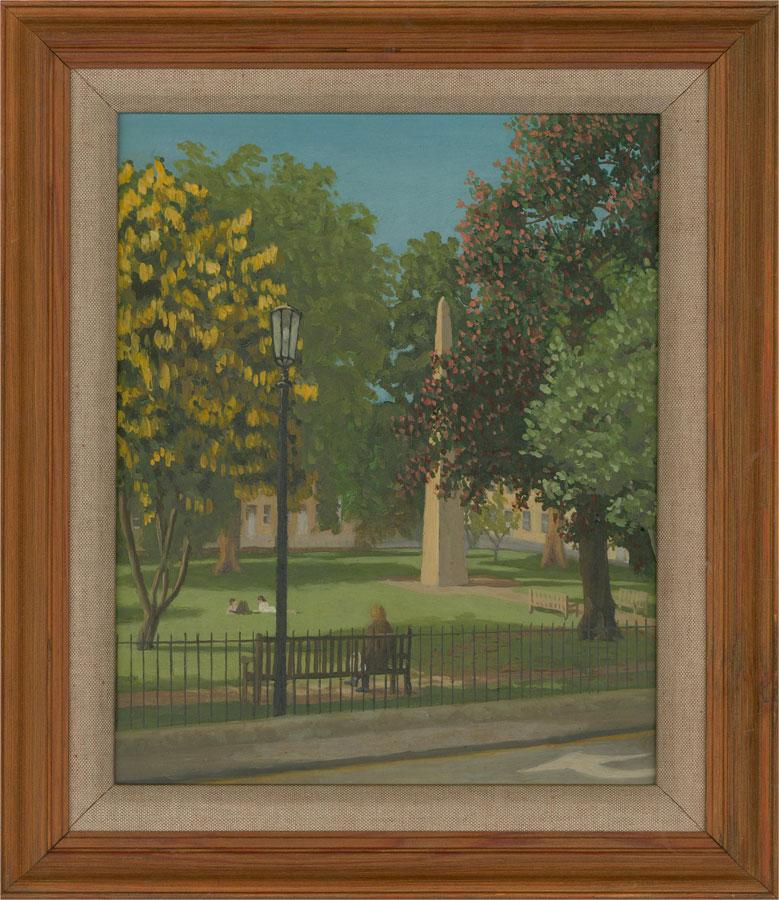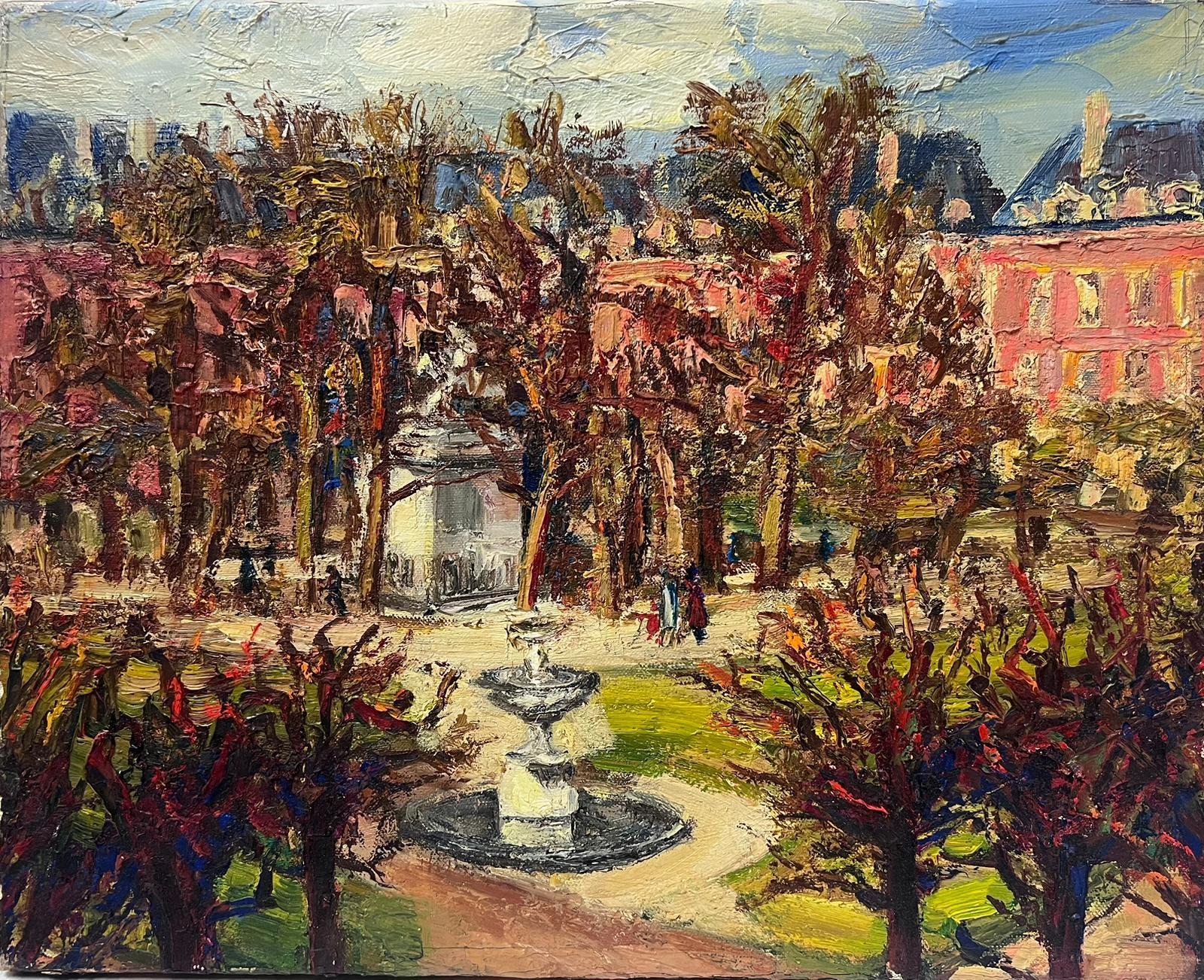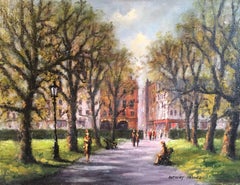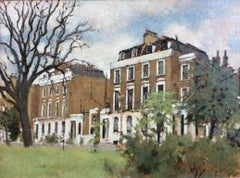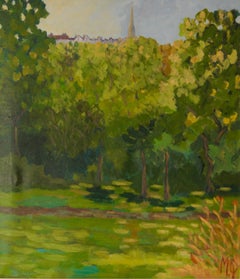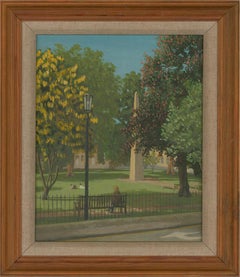Items Similar to Brunswick Square Gardens, London.
Want more images or videos?
Request additional images or videos from the seller
1 of 13
Eric Henri KenningtonBrunswick Square Gardens, London.circa 1911-1912
circa 1911-1912
$3,456.91
£2,500
€2,945.30
CA$4,789.72
A$5,197.57
CHF 2,754.25
MX$63,745.68
NOK 34,083.70
SEK 32,207.30
DKK 21,988.16
About the Item
Eric Henri Kennington R.A. 1888-1960, was an English artist, sculptor and illustrator. He served as an official war artist in both World Wars, he was born in London and was a member of the Royal Academy and the New English Art Club, his time as a war artist was spent mainly drawing and painting portraits of servicemen, officers and the ranks also. He met and was influenced by T.E. Lawrence and was responsible for numerous illustrations in Lawrence's book Seven Pillars of Wisdom. He produced a large number of public sculptures during the 1930's, as a well known artist he was in demand for painting the most famous people of the time. This painting depicts a row of houses in Brunswick Square Gardens in central London, the houses were the homes of very famous artistic people and scholars, E.M. Forster, Virginia and Leonard Woolf , Forster lived at No. 27 until at least 1915 he also lived at no. 26 at a later date. The row of houses were demolished in 1926, and I suspect this was painted by Kennington for one of his friends as a reminder of their mutual love of the position, a small tree lined landscape in the middle of London, and suffering no damage during the War, but finding it being demolished thereafter. A blue plaque now marks the position of the house now, the house was registered in the name of Adrian Stephen until 1915, he was known to all the occupants.
- Creator:Eric Henri Kennington (1888 - 1960, British)
- Creation Year:circa 1911-1912
- Dimensions:Height: 18 in (45.72 cm)Width: 22 in (55.88 cm)Depth: 2 in (5.08 cm)
- Medium:
- Period:
- Condition:
- Gallery Location:Douglas, GB
- Reference Number:Seller: No. 1891stDibs: LU2373215614732
About the Seller
5.0
Vetted Professional Seller
Every seller passes strict standards for authenticity and reliability
1stDibs seller since 2023
18 sales on 1stDibs
Typical response time: 6 hours
- ShippingRetrieving quote...Shipping from: Douglas, United Kingdom
- Return Policy
Authenticity Guarantee
In the unlikely event there’s an issue with an item’s authenticity, contact us within 1 year for a full refund. DetailsMoney-Back Guarantee
If your item is not as described, is damaged in transit, or does not arrive, contact us within 7 days for a full refund. Details24-Hour Cancellation
You have a 24-hour grace period in which to reconsider your purchase, with no questions asked.Vetted Professional Sellers
Our world-class sellers must adhere to strict standards for service and quality, maintaining the integrity of our listings.Price-Match Guarantee
If you find that a seller listed the same item for a lower price elsewhere, we’ll match it.Trusted Global Delivery
Our best-in-class carrier network provides specialized shipping options worldwide, including custom delivery.More From This Seller
View AllStreet corner Hackney, East London
Located in Douglas, Isle of Man
Noel Gibson 1928 -2006, was a Scottish born painter who lived in the East End of London. Gibson was a self taught artist who lived in London and spent a great deal of time painting t...
Category
Late 20th Century Landscape Paintings
Materials
Oil, Board
Eltham, London
By Francis Dodd
Located in Douglas, Isle of Man
Francis Dodd R.A. 1874-1949, was an English landscape and portrait painter, draftsman and etcher. He attended the Glasgow School of Art and travelled through Europe, France, Italy an...
Category
1930s Landscape Paintings
Materials
Paper, Watercolor
Garden
By David Gentleman
Located in Douglas, Isle of Man
David Gentleman 1930- R.D.I. , is an English artist born in London, attended Royal College of Art. His works frequently compose of London urban landscapes and this picture seems...
Category
1960s Landscape Paintings
Materials
Watercolor, Paper
Manchester
By Francis Dodd
Located in Douglas, Isle of Man
Francis Dodd R.A. 1874-1949, was an English landscape and portrait painter, draughtsman and etcher. He attended the Glasgow School of Art and travelled throughout Europe, France, Ita...
Category
1890s Landscape Paintings
Materials
Paper, Pastel
Big Ben, Westminster, London. 1970's
Located in Douglas, Isle of Man
Morris or Morius, an unknown painter who has a flair for the extravagant cavalier manner of brushwork, clearly a very experienced and confident artist, who remains anonymous to our ...
Category
1970s Landscape Paintings
Materials
Oil, Board
The Tower Of London
Located in Douglas, Isle of Man
Gilbert Spencer R.A. 1892-1979, was an English painter and was the younger brother of the artist Sir Stanley Spencer. Gilbert painted in oil and watercolour, portrait, landscape, genre compositions and murals. He studied at the Camberwell School of Art, the Royal Academy and the Slade School of Art, where his works were influenced by Henry Tonks, he became a member of the New English Art Club and taught art at a number of institutions including, the Royal College, Camberwell, Oxford University and the Glasgow School. He was familiar with Lady Ottoline Morrel and the Bloomsbury set...
Category
Mid-20th Century Landscape Paintings
Materials
Canvas, Oil
You May Also Like
Park Walk, Impressionist City Scene, Signed Oil Painting
By Anthony Hedges
Located in Cirencester, Gloucestershire
Park Walk, Impressionist City Scene, Signed Oil Painting
By British artist, Anthony Hedges, 20th Century
Signed by the artist on the lower right hand corner
...
Category
20th Century Impressionist Landscape Paintings
Materials
Oil
Crescent Grove, Clapham - Oil, 20th Century
By Gordon Scott
Located in London, GB
Gordon Scott
1914 - 2016
Crescent Grove, Clapham
Oil on canvas
Image size: 18 x 24 inches
Contemporary style frame
GORDON SCOTT EXHIBITION AT DARNLEY F...
Category
20th Century Landscape Paintings
Materials
Canvas, Oil
Looking Up To Highgate - Late 20th Century Landscape of Park in London by Quirke
By Michael Quirke
Located in Watford, Hertfordshire
Looking Up To Highgate
Michael Quirke was born in 1946 and studied at St Martin’s School of Art, London. After moving from London, Michael became a member of the art community in St...
Category
Early 2000s Post-Impressionist Landscape Paintings
Materials
Canvas, Acrylic
John Trentham - 20th Century Oil, Queen's Square, Bath
Located in Corsham, GB
A delightful study by local Bath artist John Trentham. Figures enjoy Queen's Square park in the city centre on a clear, sunny day. The artist has captured this beautiful summer's day...
Category
21st Century and Contemporary Landscape Paintings
Materials
Oil
$231 Sale Price
20% Off
French Post Impressionist Oil Paris Square Place des Vosges? Signed Original
By Josine Vignon
Located in Cirencester, Gloucestershire
Paris (Place des Vosges)
by Josine Vignon (French 1922-2022)
oil painting on canvas, unframed
canvas: 13 x 16 inches
inscribed verso
very good condition
provenance: from the artist...
Category
Mid-20th Century Post-Impressionist Landscape Paintings
Materials
Oil
Back Gardens Original Oil Painting 20th Century Urban Landscape British Art
By Alice Headley Neave
Located in London, GB
Alice Headley Neave
1903 - 1977
Back Gardens
Oil on canvas, signed lower left
Image size: 19 x 15 inches
Contemporary style frame
The daughter of Dr Arthur Henry Headley Huckle, Alice was...
Category
20th Century Landscape Paintings
Materials
Canvas, Oil
More Ways To Browse
20th Century London Art
Antique Framing Square
Officer Portrait
Portraits Of Officers
Virginia Woolf
Antique Paintings Of People
T E Lawrence
Virginia Leonard
Eric Kennington
Volcano Painting
19th Century American Artists
American Pastoral Landscape
Arched Canvas Painting
Arthur James
Bluebonnet Painting
Charles Francois Daubigny
Covered Wagon
Dawson Montague
